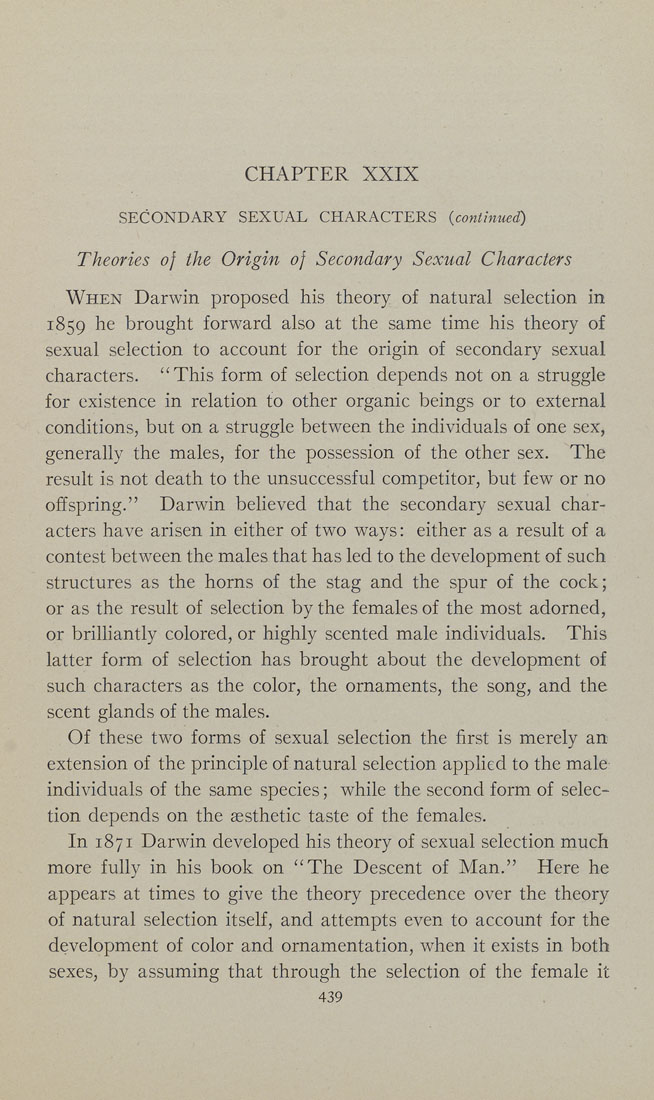CHAPTER XXIX
SECONDARY SEXUAL CHARACTERS {continued)
Theories of the Origin of Secondary Sexual Characters
When Darwin proposed his theory of natural selection in
1859 he brought forward also at the same time his theory of
sexual selection to account for the origin of secondary sexual
characters. "This form of selection depends not on a struggle
for existence in relation to other organic beings or to external
conditions, but on a struggle between the individuals of one sex,
generally the males, for the possession of the other sex. The
result is not death to the unsuccessful competitor, but few or no
offspring." Darwin believed that the secondary sexual char¬
acters have arisen in either of two ways: either as a result of a
contest between the males that has led to the development of such
structures as the horns of the stag and the spur of the cock;
or as the result of selection by the females of the most adorned,
or brilliantly colored, or highly scented male individuals. This
latter form of selection has brought about the development of
such characters as the color, the ornaments, the song, and the
scent glands of the males.
Of these two forms of sexual selection the first is merely an
extension of the principle of natural selection apphed to the male
individuals of the same species; while the second form of selec¬
tion depends on the aesthetic taste of the females.
In 1871 Darwin developed his theory of sexual selection much
more fully in his book on "The Descent of Man." Here he
appears at times to give the theory precedence over the theory
of natural selection itself, and attempts even to account for the
development of color and ornamentation, when it exists in both
sexes, by assuming that through the selection of the female it
439
|








